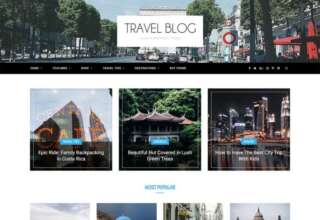Cruising through the capital on a canal boat has given writer Helen Babbs a new perspective on London. Here she suggests some lesser-known places to visit along its navigable waterways, including a lost canal south of the river
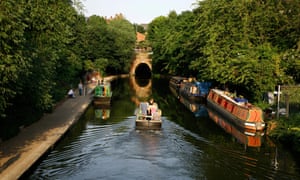
Imoved to living on the water almost three years ago, and one of the best things about being on a boat is the proximity to nature. One morning I opened the curtains to see a cormorant swimming westwards, fish-like and gleaming, slowly followed by a gaggle of foraging Canada geese. The whole of London’s canal network is designated a site of importance for nature conservation; it’s a great place for wildlife spotting, as well as people watching – a welcome blue-green space amid the capital’s grey.
You don’t have to be a boater to appreciate London’s navigable waterways but living like this has encouraged me to explore places along less well-trodden towpaths. The usual canalside attractions couldn’t be busier. Camden Lock, Little Venice, Broadway Market, that flurry of artisan eateries close to Kingsland Basin – all are bustling every weekend. But it is still possible to find some peace and quiet on the urban canal network.
Walthamstow marshes
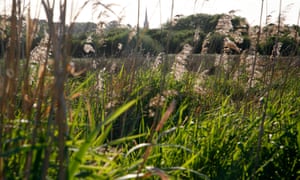
This site of special scientific interest (SSSI) lies low in the river Lea’s alluvial flood plain on a bed of silt, gravel and London clay. Over 400 species of plant have been recorded here, with 250 considered regulars. There’s meadow, reed bed and wooded thicket to explore, as well as marshland. It’s one of London’s wildest places. The marshes are free to explore daily and you’ll find a large car park at Lee Valley Ice Centre on Lea Bridge Road and a smaller car park at Coppermill Lane in Walthamstow.
•visitleevalley.org.uk
Limehouse Cut
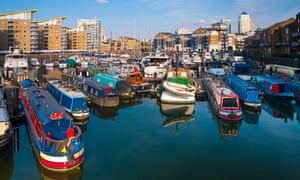
London’s oldest canal, which dates back to 1766, is this poker-straight cut that connects the Lee Navigation to the Regent’s canal. Built up along its entire route, it’s a shady and tunnel-like passage. It’s not a desert, though: on a walk you might spot cormorants or great crested grebes. Commercial operations ended at Limehouse Basin in 1969 and a modern marina was established in the 1980s. It now hosts around 90 boats, from humble barges to flashy yachts and great sailing ships.
•canalrivertrust.org.uk
Islington Tunnel
A hill lies in the path of the Regent’s canal between Angel and King’s Cross. Instead of climbing over it via several locks, the waterway cuts straight through. It opened in 1820 and was renovated in 2000. In the early days, barge folk would “leg” their boats through. Later, mechanised tugs replaced leg power and then barges got engines of their own. Just under a mile in length, the Islington Tunnel is only accessible by motor boat, but a number of organised tours cruise through, including one with a London Canal Museum guide (£8.40 adult, £6 children, including admission to the museum).
•canalmuseum.org.uk
Kensal Green cemetery

One of London’s Magnificent Seven cemeteries, this canalside location “hosts” the likes of Harold Pinter, Wilkie Collins, Anthony Trollope and the Brunels. The canal was once an integral part of operations: coffins and mourners would arrive by boat, dropped off at a specially built jetty. Aside from the screams of resident ring-necked parakeets, the older parts of the cemetery are quiet, crumbling into a romantic, ivy-laced collapse.
•kensalgreencemetery.com
Cowley Lock
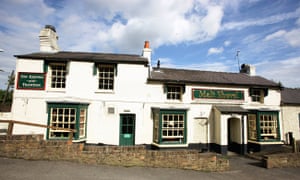
It’s hard to believe this picturesque part of the Grand Union belongs to London. Close to both the Fray’s river and the river Colne, Cowley is also within walking distance of Little Britain Lake, so called because of its patriotic shape. The Malt Shovel pub, which has a large beer garden, and the Tollhouse Tearooms are right beside the lock.
•hillingdon.gov.uk
Grand Surrey canal
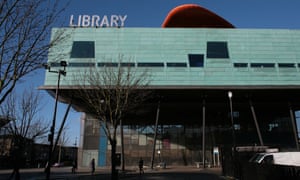
The Grand Surrey opened in stages from 1807, lined with sawmills and kilns. It fell out of use and was gradually filled in, disappearing for good in 1974. You can trace its route from Peckham to Rotherhithe on foot. The first and best clue is a 1km-long narrow park running north from Peckham library. The footpath cuts low between grassy banks that immediately recall classic canal topography; two cast-iron bridges, still with their towing paths intact, complete the illusion.
•londonslostrivers.com
Helen Babbs is author of Adrift: A Secret Life of London’s Waterways (Icon Books, £16.99). To order a copy for £13.59 including UK p&p visit the guardian bookshopor call on 0330 333 6846.







